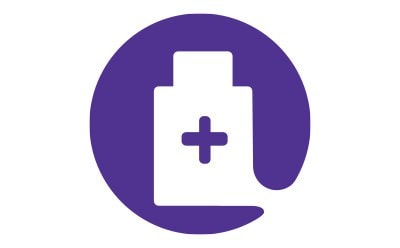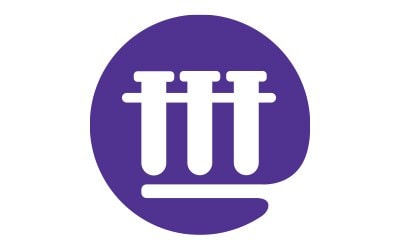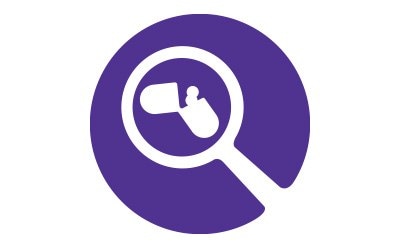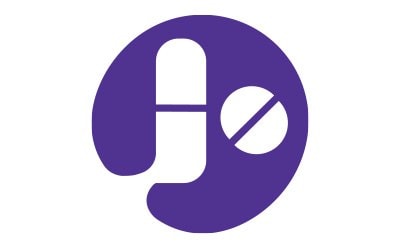Elemental Impurities - Certified Reference Materials for ICH Q3D, USP <232> and Ph.Eur. 5.20
Ingrid Hayenga, Product Manager Reference Materials, Merck
Article from Analytix Reporter - Issue 1 (Updated Nov. 2023 – see original version here)
About Elemental Impurities
Metallic contamination in drug products, referred to as elemental impurities, may arise from several sources. The main source of contamination are equipment and utensils used in processing, holding, transferring and packaging, A second source can be residual metals used as process catalysts. Since elemental impurities pose a risk to patient health due to toxicological effects, element impurity levels should be controlled within acceptable limits in a drug product.1
Potential Sources of Elemental Impurities

Air and Water Media

Manufacturing Equipment

Container Closure and Packaging System

Drug Compounds

Excipients in Pharmaceutical Product

Elemental Impurities in Drug Products
Evolution of ICH Q3D Guidelines for Elemental Impurities
In 2009, the International Conference on Harmonization (ICH) proposed the development of a new harmonized guideline to provide a global policy for limiting metal impurities in drug products and ingredients. This approach should provide clear regulatory guidance on specification limits for elemental impurities worldwide and logically should have an impact on the work of the national regulatory bodies in having transparent and comparable results.
In 2014 the first version of the ICH Q3D guideline for elemental impurities was published, categorizing the various elemental impurities in four different classes which were intended to facilitate decision during the risk assessment process. In 2019, a revision was done on the Cadmium Inhalation PDE (permitted daily exposure), published as ICH Q3D(R1) guideline. The current Q3D(R2) guideline has been published in April 2022 (step 4) and is now in the implementation status (step 5). It includes a correction of PDEs for Gold, Silver and Nickel; Gold and Silver monographs; and an addition of limits for elemental impurities by the cutaneous and transcutaneous route.
Class 1 Impurities
These impurities are significantly toxic to humans and have limited or no use in the manufacture of pharmaceuticals. They can be found as impurities from commonly used materials (e.g., mined excipients). All four elements require evaluation during the risk assessment across all potential sources of elemental impurities and routes of administration. The class 1 elements are: As, Cd, Hg, Pb.
Class 2 Impurities
These impurities are generally considered routedependent human toxicants. These impurities are further divided into two sub-classes, 2A and 2B, based on their relative likelihood of occurrence in the drug product.
- Class 2A elements have relatively high probability of occurrence in the drug product and thus require risk assessment across all potential sources of elemental impurities and routes of administration (as indicated).
The class 2A elements are: Co, Ni and V. - Class 2B elements have a reduced probability of occurrence in the drug product related to their low abundance and low potential to be co-isolated with other materials. As a result, they may be excluded from the risk assessment unless they are intentionally added during the manufacture of drug substances, excipients or other components of the drug product. Class 2B elements are: Ag, Au, Ir, Os, Pd, Pt, Rh, Ru, Se and Tl.
Class 3 Impurities
These elements have relatively low toxicity at oral administration but may require a risk assessment if applied via inhalation or parenteral routes. Class 3 elements are: Ba, Cr, Cu, Li, Mo, Sb and Sn.
Other Elements
There are some elemental impurities for which Permitted Daily Exposures (PDEs) have not been established due to their low toxicities and/or differences in regional regulations. If they are present in a drug product, they are addressed by other guidelines and/or regional regulations. These elements are: Al, B, Ca, Fe, K, Mg, Mn, Na, W and Zn.
Evaluation per USP and EP
Up to 2010, the USP and EP proof of heavy metal contamination in drugs was obtained via a colorimetric analytical method based on the precipitation of a metal sulfide in a sample and comparing it to a lead standard (USP <231> and Ph.Eur. 2.4.8).
Based on the Guideline for Elemental Impurities (Q3D) which was published by the International Conference on Harmonization (ICH) in 2010, the USP proposed three new General Chapters covering impurity limits, analytical procedures in pharmaceutical products and raw materials, and elemental contaminants in dietary supplements.
- Chapter USP <232>, Ph.Eur. 5.20: Elemental Impurities in Pharmaceutical Products – Limits
- Chapter USP <233>: Elemental Impurities in Pharmaceutical Products – Procedures
- Chapter USP<2232>: Elemental Contaminants in Dietary Supplements
In January 2015, the USP established January 1, 2018 as the new date of applicability for General Chapters <232>, <233> and <2232>. The implementation should align with limits and timelines set down by other pharmaceutical and medical agencies such as the ICH Q3D Step 4 Guidelines for Elemental Impurities announced on December 16, 2014.
In January 2023 revision was closed regarding the revised ICH Q3D(R2) guideline with the new PDEs for Gold, Silver and Nickel as well as the additional limits for cutaneous and transcutaneous products. They will be incorporated in the USP-NF/PF general chapters on May 1st, 2024.
The Pharmacopoeia Europe announced in July 2014 their strategy regarding elemental impurities and the implementation of the ICH Q3D. Nearly one year later, in April 2015, they published their policy on elemental impurities and timelines for revision of general and individual texts. In August of the same year, clarification was given for products outside the scope of ICH Q3D.
The implementation of the guideline compliances should start in June 2016 for products with new marketing authorization, either containing new active substances or already approved substances. Marketed products, including new mutual recognition applications of already approved substances, should comply with the Guideline from December 2017.
The implementation of the General Test 5.20 and the General Method 2.4.20 replaced the EMA guideline on metal catalysts and metal reagents by the principles of the ICH. The publication was done in the Ph.Eur. Suppl. 9.3 (implementation date January 1, 2018), having no test for elemental impurities in the individual monographs except for substances of natural origin. Given the intrinsic nature of elemental impurities in these substances, they are among the major potential sources of elemental contamination in medicinal products. The Ph.Eur. Commission has also specifically recommended keeping the different tests for elements for which no PDE limits have been established, i.e., those identified as “other elements” in the ICH Q3D guideline in individual monographs.2
Analytical methods
Concerning new analytical methods, ICH Q3D does not include any recommendation on instrumental methods but the following analytical procedures are suggested in USP<233> dependent on the expected concentration of the elemental impurity in the product or component:
- Parts-per-million (ppm) concentrations ICP-OES or atomic absorption
- Parts-per-billion (ppb) concentrations ICP-MS
ICH Q3D limits for elemental impurities
For a total of 24 elements, toxicity limits are specified and defined as maximum PDE levels in mg/day for the four major drug delivery categories. Table 1 lists the PDE values in μg/day, valid for drug products with an intake of ≤10 g/day.
Table 2 lists the elements to be considered in the risk assessment.
For the new ICH Q3D(R2) guideline being adapted by USP and Ph.Eur., we offer mixes with element concentration ratios according to oral, parenteral, inhalational and cutaneous permitted daily exposures (PDE) of drug products.
All products with their element respective concentrations (mg/L) are listed in Table 3.
Table 4 lists the features of the TraceCERT® Certified Reference Material (CRM) solutions.
Materials
References
To continue reading please sign in or create an account.
Don't Have An Account?